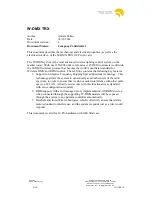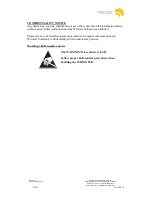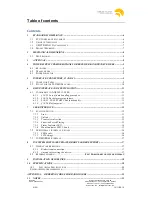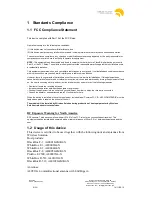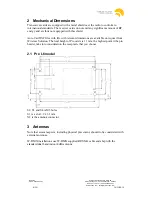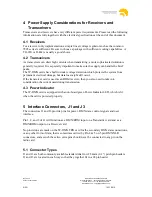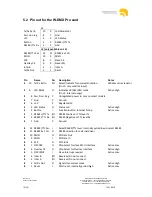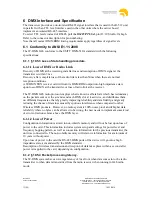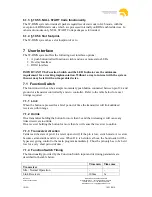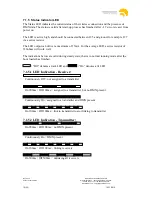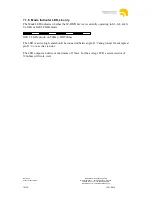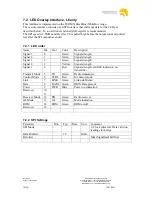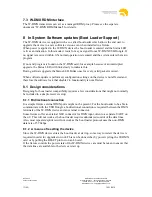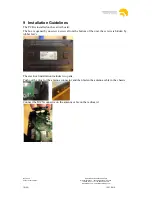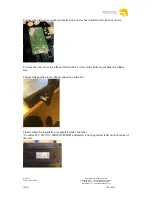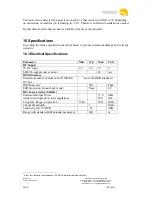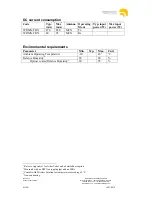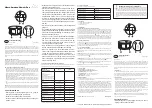
Revision 4
Author: Anders Zellén
Wireless Solution Sweden Sales AB
Stureparksvägen 7
– 451 55 Uddevalla – Sweden
+46 522 511 511 Tel. +46 522 440 885 Fax.
Wirelessdmx.com sales@wirelessdmx.com
11(23)
14/11/2014
6
DMX Interface and Specification
The transceiver provides a non-isolated RS-485 signal interface that is used in the R-512 unit
in parallel with an TTL level interface used in the other units where the carrier board
implement an isolated RS-485 interface.
To select TTL levels instead of RS485, pull the
RS485/TTL Sel.
pin (J3:12/Slot In:16) high.
Refer to the connector description for pin numbering.
Note that all normal DMX/RDM timing requirements apply regardless of signal levels.
6.1 Conformity to ANSI E1.11-2008
The W-DMX G4S conforms to the USITT DMX-512A standard with the following
specifications:
6.1.1 §10.5.3 Loss of data handling procedure.
6.1.1.1
Loss of DMX or Radio Link
Recovery of DMX at the receiving end after loss and resumption of DMX signal at the
transmitter is within 5 ms.
Recovery after complete loss of the radio link is less than 50ms when there are normal
reception conditions.
A W-DMX TRX receiver card will turn its DMX/RDM output into high impedance state
upon loss of DMX at the transmitter, or loss of radio link at the receiver.
The W-DMX G4S radio protocol employs what is known as Data Safe which has redundancy
on the packets sent over the air and send each DMX slot at least twice, and distributes them
on different frequencies, thereby greatly improving reliability and data fidelity, and greatly
reducing the chance of data loss caused by spurious interference when compared to other
Wireless DMX products. However, no radio system is 100% noise proof and if higher data
reliability where no bytes can be allowed to be wrong, the user needs to implement some kind
of error correction scheme above the DMX layer.
6.1.1.2
Loss of Power
Configuration information is stored in non-volatile memory and will not be lost upon loss of
power to the card. This information includes system setup and settings for power level and
frequency hopping pattern, as well as connection information for the previous transmitter the
unit was connected to. The non-volatile memory will retain its information for a minimum of
10 years without power.
Upon loss of power to the card the RS-485 DMX ports of the device will go into a high
impedance state, as mandated by the DMX standard.
Resumption of wireless transmission and reception of data takes place within a second after
power is reapplied to the card, depending on configuration.
6.1.2 §10.5.4 Packet processing latency.
The W-DMX systems have an average latency of 3ms from when data comes in to the radio
transmitter to when data is transmitted from the radio receiver when running in G4S radio
mode.


